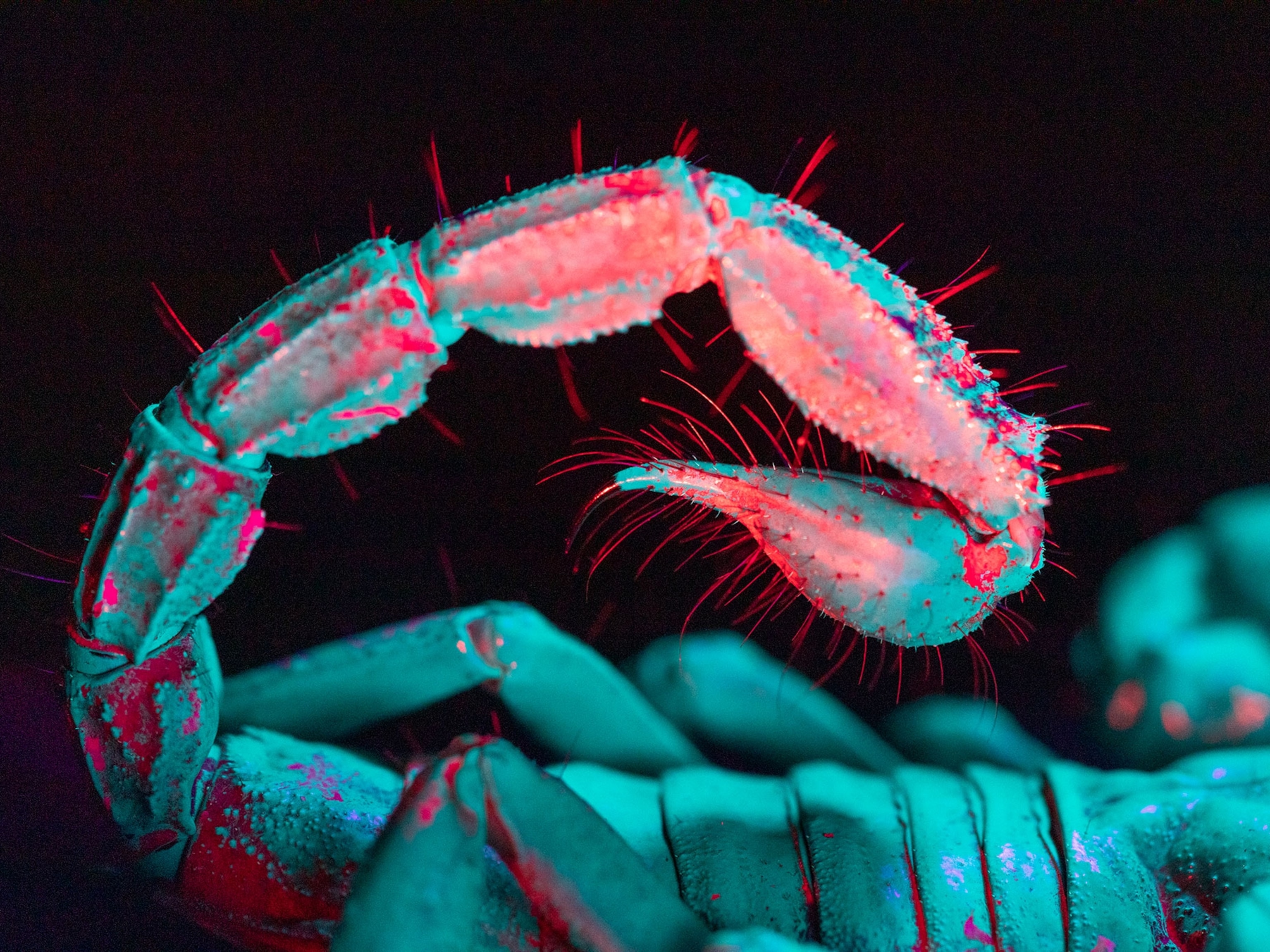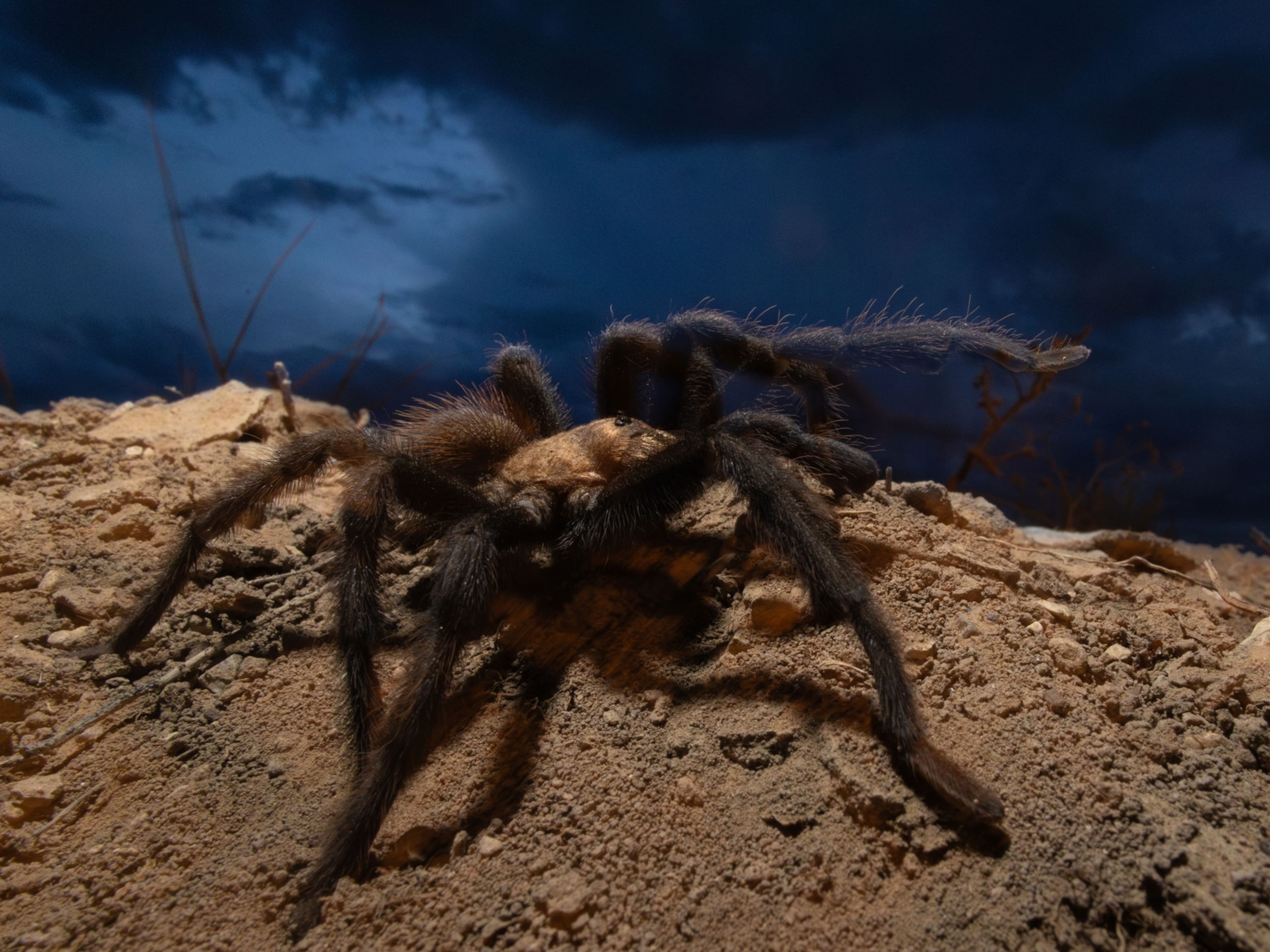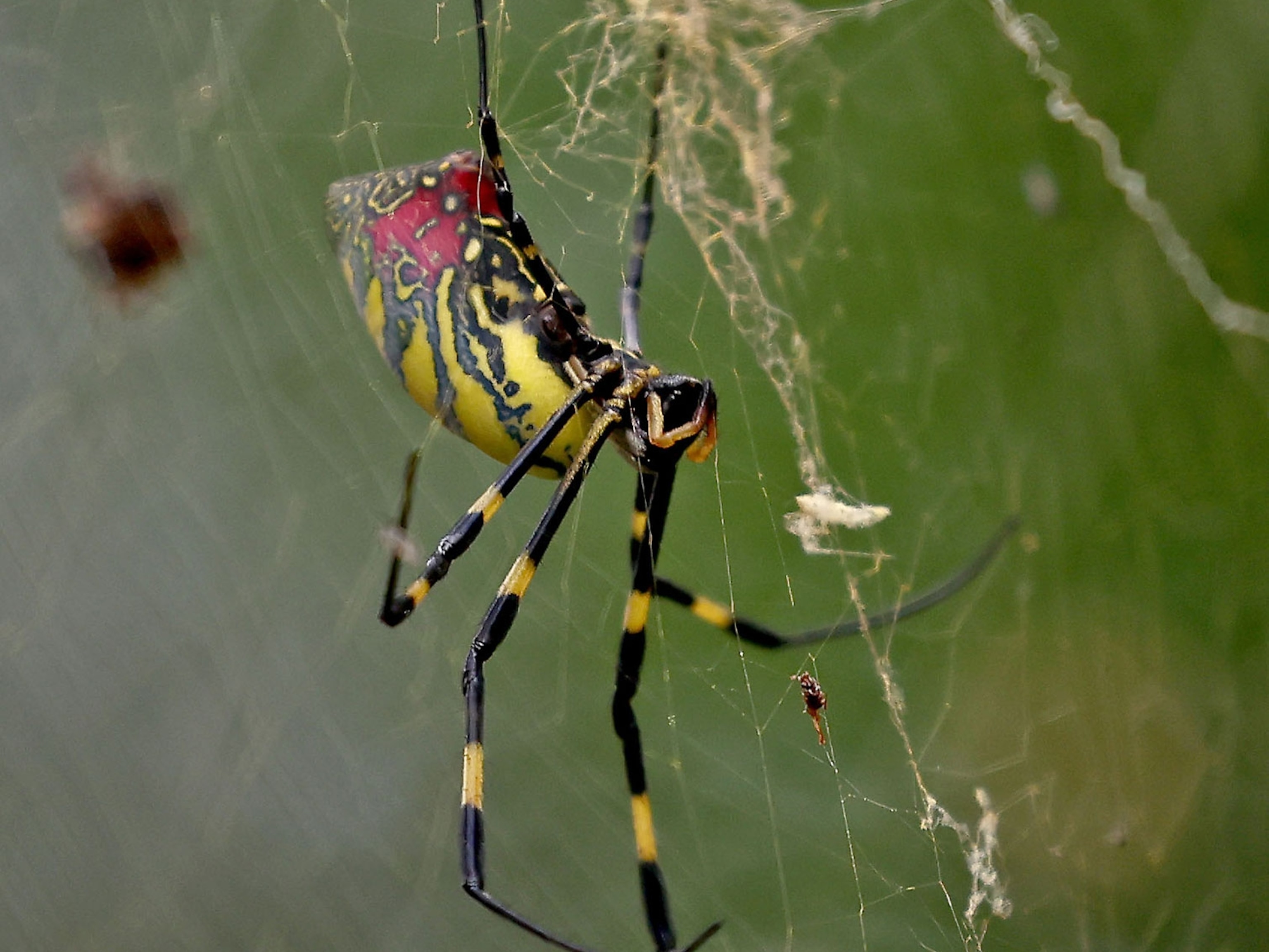To latch onto a deer, ticks must first pierce a thick, furry hide. Leaf-cutter ants easily gnaw through tough tropical leaves. And scorpions use their tails to inject venom into prey several times larger than themselves.
Such marvels have long intrigued University of Oregon physicist Robert Schofield. How do these tiny creatures deliver such an outsized punch?
The answer, according to his new paper published in Scientific Reports, lies in the very atomic structure of their tools.
Scientists already knew that the mandibles, fangs, and stingers of several invertebrate species contain large amounts of heavy metals, such as zinc, copper, and manganese—up to 20 percent by weight in some species. But they didn’t know how the metals related to durable proteins that are also found in these invertebrates’ body parts. (Watch trap-jaw spiders snap their jaws at amazing speed.)
By analyzing the proteins and heavy metals at a molecular level, Schofield and colleagues learned that individual metal atoms are woven into the proteins to create a strong, long-lasting composite material, which they’ve dubbed heavy element biomaterials.
“It’s really cool that adding these metals makes for a more durable tool,” says Stephanie Crofts, a biologist at the College of the Holy Cross in Massachusetts who wasn’t involved in the paper. “This study is a nice look at how this occurs across a range of organisms, and it may be more common than we think.”
It's also likely, Crofts adds, that such heavy element biomaterials could inspire engineers creating new products, such as smaller mobile phones and more-robust medical devices.
Better than biominerals
Of course, animals have evolved another way to form a hardy natural material. Known as biomineralization, this widespread process occurs when proteins in an animal’s body wrap around large mineral crystals, such as in bones or some seashells. Bone is a powerful mix of mineral (mostly calcium carbonate) and proteins that provide the animal’s skeleton with necessary flexibility, stretching and squishing far beyond what either material could do on its own. (Learn more about the science of bone.)
But biomineralization has its limits: Consider seashells, which can easily break. “Creating something sharp with a biomineral would be like making a knife out of bricks,” says Schofield, who has been studying invertebrate jaws and claws since an ant crawled across his office floor in the late 1980s—the same office he occupies now.
Biominerals aren’t the answer for many invertebrates, because they need sharp, sturdy body parts that can withstand continual usage. A shattered stinger, for instance, would be a death sentence for a scorpion. So they found another way, Schofield says.
A powerful mix of metals and proteins
For his latest study, Schofield and colleagues from the Pacific Northwest National Laboratory and Oregon State examined body parts of ants, spiders, scorpions, mollusks, and a type of marine worm. The team built miniature probes to test these parts’ mechanical properties and to dissect them atom by atom.
They found that heavy metals, such as zinc and manganese, were evenly distributed throughout an invertebrate’s body part, unlike the matter in bone and other biominerals. This atomic structure allows the body part to be sharper and undergo more wear and tear than if the proteins didn’t have the metals.
The heavy element biomaterials have another cost-saving benefit: An ant uses 60 percent less energy to cut through leaves than if it didn’t have this atomic structure, according to the team’s calculations. (Read about the Dracula ant, which can bite 5,000 times faster than the blink of an eye.)
Schofield still has many questions, such as whether these naturally tough materials evolved once or many separate times across different invertebrate groups, from crustaceans to centipedes.
Meanwhile, the discovery could create new potential for human tools, Crofts says.
For instance, engineers are always looking for better strategies to create objects that are small but don’t break easily, such as smartphones and wearable medical devices like insulin pumps.
Making tools with this same atomic arrangement of proteins and heavy metals could lead to products that are light, strong, and resistant to everyday handling, Crofts says—yet another example of how nature knows best.






